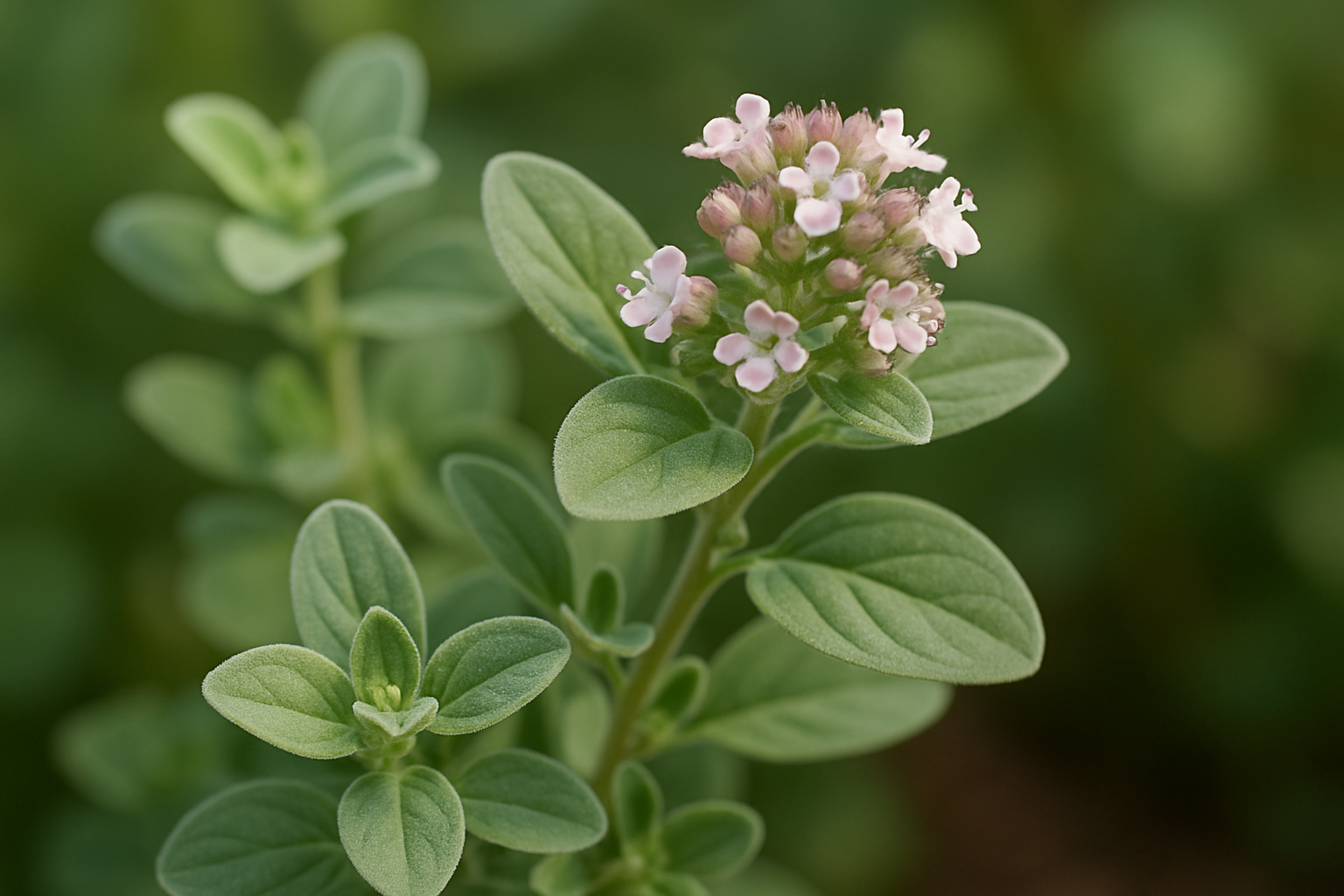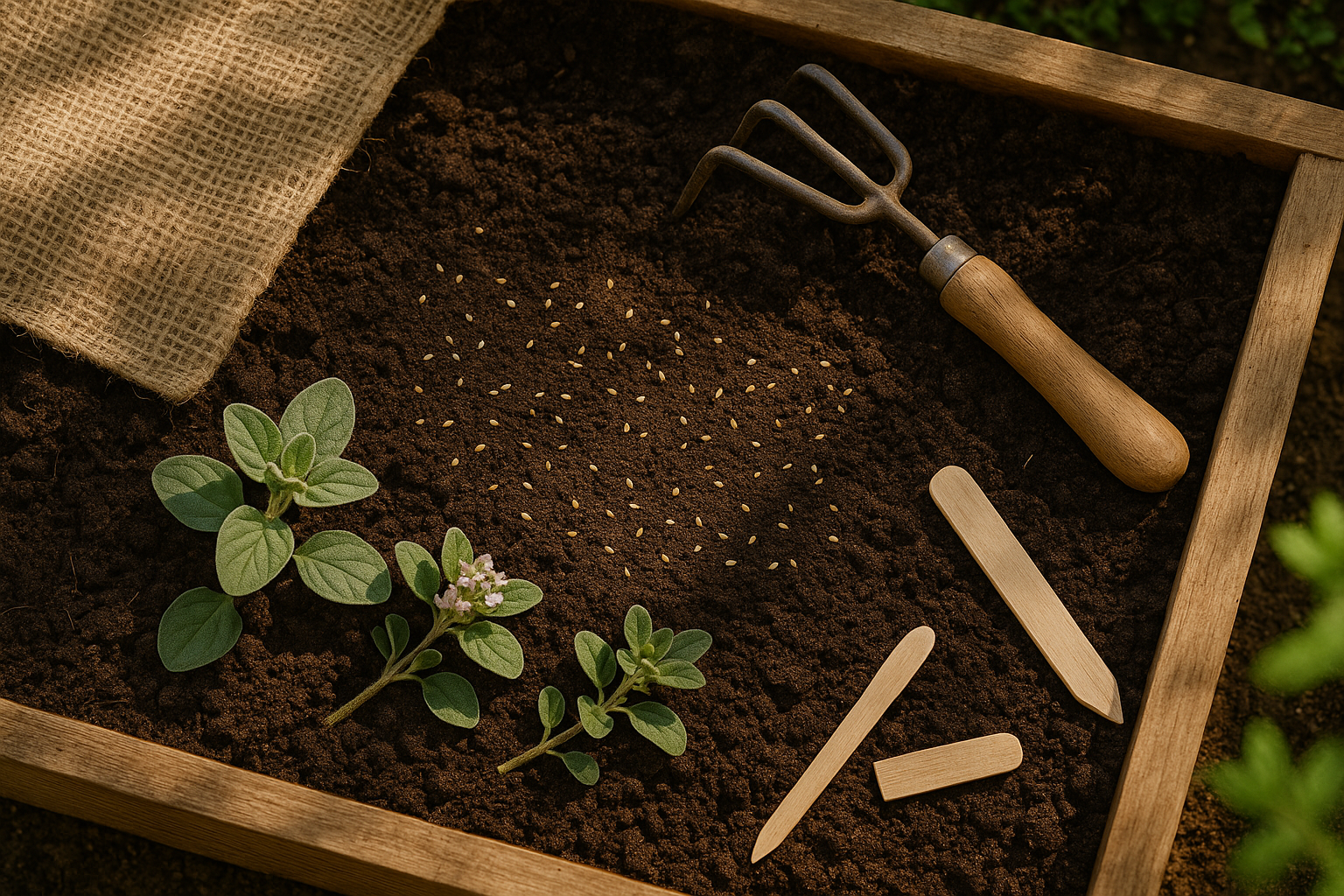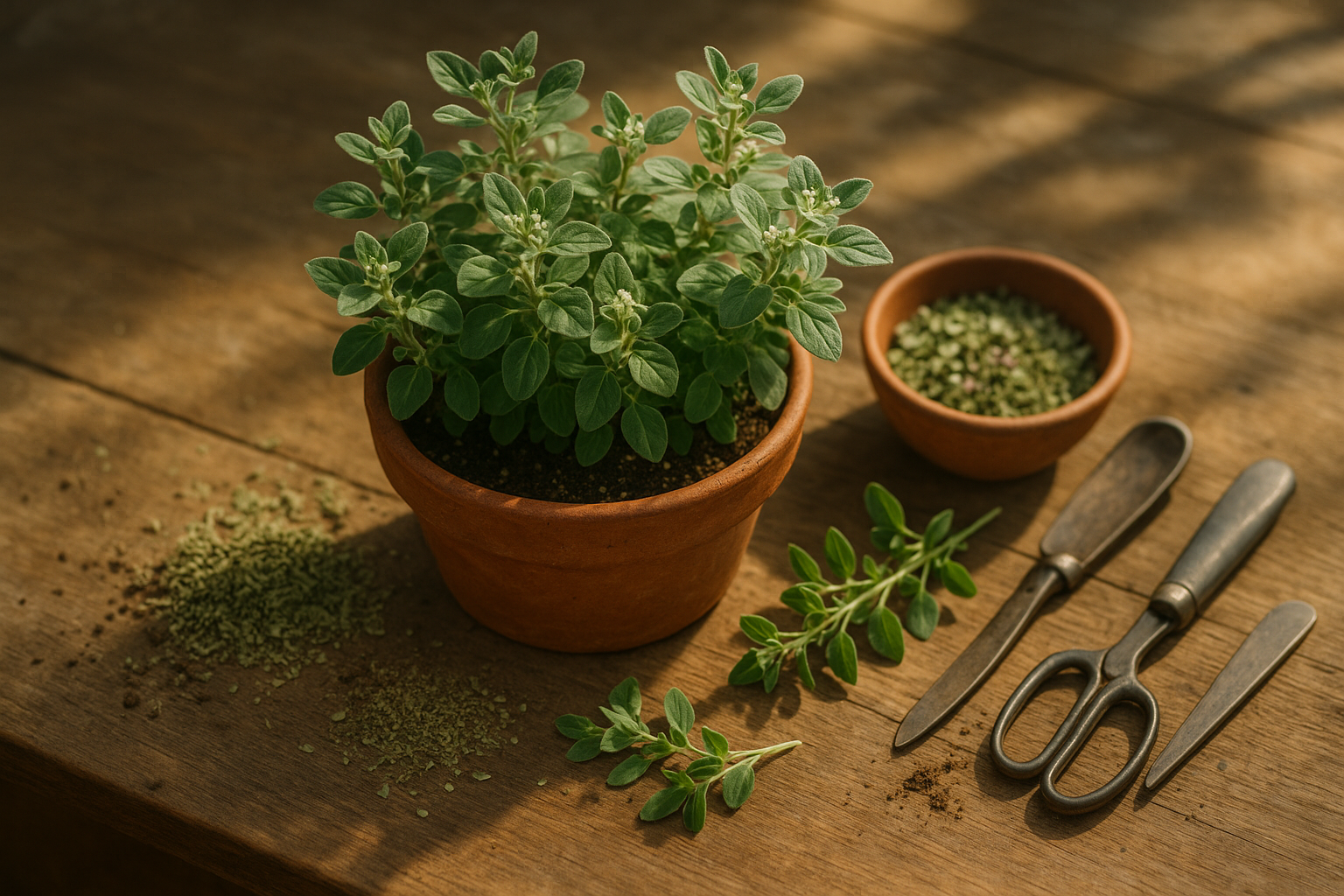What is Marjoram?

If you’ve ever wondered whether you can regrow marjoram from store purchases, you’re not alone—many herb lovers are tempted by the soft, fragrant sprigs often found in grocery bundles. But what exactly is marjoram? Belonging to the Lamiaceae or mint family, marjoram (Origanum majorana) has been cherished for centuries for its delicate stems, small oval leaves, and clusters of tiny white or pink flowers. Unlike its bolder cousin oregano, marjoram offers a sweeter, milder flavor profile that brings subtle warmth to countless dishes.
Types of Marjoram
Marjoram comes in a few main types:
- Sweet marjoram, the most common in kitchens, has a gentle, slightly citrusy aroma that enhances soups, salads, and roasted meats.
- Wild marjoram, often called oregano, is earthier and more robust—favored in Mediterranean fare.
- Pot marjoram falls somewhere in between, offering a pleasing mix of floral and pungent notes.
Uses and Benefits
Culinary enthusiasts adore marjoram for its ability to complement without overpowering, making it a staple in seasoning blends and stews. Beyond flavor, marjoram has a long history as a herbal remedy, prized for its potential anti-inflammatory and digestive benefits. Whether you’re a home chef or a wellness seeker, marjoram’s versatility makes it a star in both the kitchen and herbal medicine cabinet.
Choosing the Right Marjoram and Starting Out
When starting out with marjoram, sweet marjoram (Origanum majorana) is the most popular variety for home growing, thanks to its mild, savory flavor and compact, bushy habit. For beginners, buying young nursery plants is usually the easiest option, as they are ready to transplant into pots or garden beds.
However, marjoram is also quite simple to grow from seeds. Just sprinkle the seeds on the surface of moist soil and lightly press them in, since they need light to germinate. Seeds usually sprout in 1-2 weeks if kept warm (around 70°F/21°C).
Alternatively, you can propagate new plants from cuttings by snipping a healthy stem, removing the lower leaves, and rooting it in water or damp soil.
Marjoram thrives in full sun and well-drained soil, so pick a sunny windowsill or a spot outdoors once all danger of frost has passed. In cooler climates or if space is limited, marjoram is perfect for containers. Use a medium-sized pot with ample drainage holes, and bring the plant indoors if temperatures dip below 50°F (10°C), as marjoram is sensitive to cold.
Regularly snip leaves to encourage bushy growth and keep plants productive throughout the season.
Planting and Soil Preparation

For healthy and thriving plants, start with well-draining soil rich in organic matter—compost or aged manure works wonders to boost fertility and moisture retention. Aim for a slightly acidic to neutral pH, between 6.0 and 7.0, which is ideal for most garden vegetables and flowers.
Choose a spot that gets at least six hours of direct sunlight per day; full sun helps seeds sprout strong and cuttings root deeply.
When planting seeds, loosen the top 6-8 inches of soil, remove stones, and rake it level. Sow seeds at the recommended depth (usually twice their width), and space them according to the package—overcrowding can stunt growth and invite disease.
For cuttings, dip the cut end into rooting hormone, then insert it into a small hole in moist potting mix, firming soil gently around the stem. Keep soil consistently damp but never waterlogged to encourage robust root development.
Cover seeded areas with a thin layer of mulch or burlap to maintain moisture and warmth, and gently mist cuttings to prevent drying out. Label rows or pots so you remember what you planted and where.
Lastly, practice patience—germination can take from days to weeks depending on the plant, but your careful preparation sets the stage for lush, healthy growth.
Basic Care: Watering, Feeding, and Maintenance
Caring for your plants starts with striking the right balance in watering—roots need moisture, but soggy soil can quickly lead to problems like root rot. Stick a finger into the soil about an inch deep; if it feels dry, it’s time to water, but if it’s still damp, wait a day or two. Watch for drooping leaves (a sign of dryness) or yellowing leaves (often from overwatering).
For feeding, many plants thrive with homemade compost or an occasional dose of diluted fish emulsion, both of which offer a gentler nutrient boost than synthetic fertilizers. If you opt for commercial plant food, use it sparingly—too much can scorch roots and disrupt growth.
Regular maintenance, such as gently pinching back the tips of stems, encourages plants to grow bushier and fuller rather than getting leggy. Remove dead or yellowing leaves promptly to keep your plant healthy and prevent potential pest problems.
For both indoor and outdoor plants, care routines differ: indoor plants dry out more slowly but might need extra humidity, while outdoor plants may require more frequent checks, especially in hot weather. Outdoor gardening often invites more pests, so keep an eye out for holes in leaves or sticky residue.
Whether indoors or outdoors, attentive observation is your best tool—notice changes early, and you’ll be able to fine-tune your watering, feeding, and pruning practices for lush, resilient growth.
Growing Marjoram in Containers
Growing marjoram in containers is a great option for anyone with limited garden space or for those who want fresh herbs within easy reach. Start with a pot that’s at least 6–8 inches wide, making sure it has drainage holes at the bottom—good drainage is essential to prevent root rot.
For potting mix, choose a light, well-draining soil blend designed for herbs, or create your own by mixing equal parts potting soil, perlite, and a bit of compost for added nutrients.
Place the container in a spot that receives at least 6 hours of direct sunlight daily; marjoram loves warmth and light, so a south-facing windowsill or sunny patio is ideal. If you’re growing indoors, rotate the pot weekly to promote even growth and prevent legginess.
Water when the top inch of soil feels dry, but avoid letting the pot sit in water, as soggy roots can lead to rot. If you notice the stems becoming spindly or the leaves turning pale, your marjoram may not be getting enough sun—try moving it to a brighter spot or supplement with a grow light.
By regularly picking the leaves, you’ll keep the plant bushy and encourage fresh growth. With a few simple steps, marjoram grown in containers can thrive and add delicious flavor to your kitchen all season long.
Harvesting and Storing Marjoram
To get the best flavor from marjoram, harvest the leaves just as the plant starts to bud but before it flowers, usually in late spring or early summer. Morning is the ideal time—after the dew dries but before the sun gets hot—because that’s when the oils, and thus the flavor, are at their peak.
Snip sprigs with clean scissors, leaving at least one-third of the plant intact so it can continue growing.
For drying, gather small bunches and hang them upside down in a warm, dry, well-ventilated space away from direct sunlight. Once completely dry, strip the leaves from the stems and store them in an airtight container out of sunlight for up to a year.
Alternatively, chop fresh marjoram and freeze it in ice cube trays with a little water or olive oil; these herb cubes are perfect for adding to soups, sauces, or stews.
For the freshest supply, pick only what you need and keep the plant regularly trimmed. This prevents flowering and encourages bushier regrowth. With regular harvesting, marjoram will keep producing tender leaves all season long, giving you a steady supply for your kitchen creations.
Common Problems and Troubleshooting
Marjoram plants, while generally hardy, can run into a few troublesome issues—most notably pests like aphids and spider mites. Aphids usually cluster on new growth, causing leaves to curl or yellow, while spider mites leave tiny webs and stippled leaves.
To combat these pests organically, try spraying the plant with a mixture of water and a few drops of mild dish soap, or introduce beneficial insects like ladybugs, which naturally reduce pest populations.
Disease-wise, marjoram is susceptible to root rot if overwatered or grown in poorly draining soil, so make sure pots have drainage holes and water only when the top inch feels dry.
Leggy growth, where stems stretch tall and spindly, happens when marjoram doesn’t get enough sunlight or if it’s overfertilized. Fix this by placing the plant in a bright, sunny spot—marjoram thrives on at least six hours of sunlight per day—and pinch back the tips regularly to encourage bushier, fuller growth.
If your marjoram tastes bland, harvesting too late or using too much fertilizer could be the culprit. Harvest leaves just before the plant flowers for the best flavor, and avoid excess nitrogen-rich feeds that can dilute the essential oils responsible for marjoram’s signature taste.
Culinary and Household Uses
Marjoram is a versatile herb that brings a gentle, sweet, and slightly citrusy flavor to countless dishes. In the kitchen, it’s perfect for seasoning roasted vegetables, grilled meats, soups, and sauces. Mediterranean favorites like chicken souvlaki, Italian sausages, and ratatouille often feature marjoram, either fresh or dried. You’ll frequently find it mixed into classic herb blends such as Herbes de Provence and za’atar, where its subtle warmth ties together more pungent flavors like oregano or thyme.
Beyond culinary uses, marjoram has long been valued for its soothing medicinal properties, including calming teas for digestion and aromatherapy blends to relax the mind and body. The herb’s delicate leaves also make lovely, aromatic additions to homemade bath soaks or sachets for freshening up linens and drawers.
Want to get creative with homegrown marjoram? Try infusing it into olive oil for a fragrant dip, blending it into homemade butter, or snipping a few sprigs as an attractive (and edible) garnish for drinks and salads. You can even dry bunches to create fragrant wreaths or bouquets, adding a rustic, herbal touch to your home décor.
With so many uses, marjoram is an essential herb for both the kitchen and around the house.
